
Before inviting any designers to your home, take a moment to consider these 10 things designers notice when visiting a home. Interior design isn’t just about making things look nice; it’s about creating spaces that are both functional and visually appealing. With their specialized training and extensive experience, they can easily spot areas that could be improved. By understanding these 10 aspects that designers notice, you’ll be able to get your home ready for their visit and have a successful collaboration in transforming your space.
Assessing the Overall Layout and Flow

When designers step into a home, their first impression is often shaped by the overall layout and flow of the space. This fundamental aspect sets the foundation for the entire design process, influencing everything from furniture arrangement to traffic flow. Designers pay close attention to how spaces are interconnected and whether the layout facilitates seamless movement and functionality. Cluttered or awkward layouts can hinder the flow of energy and impede the overall harmony of the space.
“When visiting a home, I always pay close attention to the flow of space and how each room connects. A well-designed layout can enhance the overall functionality and harmony of a home.”
– Jessica McClendon, Interior Designer
To optimize the layout and flow of your home, consider the following tips:
- Open Concept vs. Defined Spaces: Designers assess whether an open-concept layout suits the lifestyle and preferences of the occupants or if defined spaces are necessary for privacy and functionality.
- Traffic Flow: Evaluating how people move through the space, designers identify potential bottlenecks and reconfigure layouts to improve circulation.
- Functionality: Assessing the practicality of the layout, designers ensure that each area serves its intended purpose effectively without sacrificing aesthetics.
- Room Proportions: Designers pay attention to the proportions of each room, ensuring a balanced and harmonious arrangement of furniture and decor.
- Focal Points: Identifying focal points within each space, designers strategically arrange furniture and decor to highlight architectural features or create visual interest.
By addressing these aspects of the overall layout and flow, homeowners can create inviting and functional spaces that reflect their unique lifestyle and preferences. Whether it’s reconfiguring furniture arrangements or optimizing traffic flow, designers play a crucial role in maximizing the potential of every square foot.
“If you are looking for a way to style your space with wall art without breaking your piggy bank, then I recommend reading “10 Surprising Benefits of Printable Wall Art”
Real-life Example:
Consider a home with a cramped and cluttered living room. By reimagining the layout and removing unnecessary furniture, designers can create an open and inviting space that promotes relaxation and socialization. Through thoughtful consideration of the overall layout and flow, homeowners can transform their living spaces into havens of comfort and style.
Evaluating Lighting

Lighting is a pivotal element in interior design, influencing the ambiance, functionality, and aesthetics of a space. When designers visit a home, they pay close attention to the quality and distribution of light, as well as the overall lighting scheme. Adequate lighting can enhance mood, highlight architectural features, and create visual interest, while poor lighting can diminish the impact of even the most well-designed spaces.
“Lighting is a crucial element in interior design, as it can dramatically influence the ambiance and mood of a space. During my visits, I evaluate the quality and distribution of light to ensure optimal lighting solutions.”
– Nate Berkus, Decorator
Here are some key considerations when evaluating lighting in a home:
- Natural Light: Designers assess the amount of natural light entering the space and its impact on the overall ambiance. They may recommend maximizing natural light by strategically placing furniture and using light-colored surfaces to reflect light.
- Artificial Lighting: Evaluating the effectiveness of artificial lighting fixtures, designers ensure that they provide adequate illumination without overwhelming the space. They may suggest incorporating a mix of overhead lighting, task lighting, and accent lighting to create layers of light and enhance functionality.
- Lighting Control: Designers consider the ability to control lighting levels and ambiance through dimmer switches, smart lighting systems, and window treatments. This allows homeowners to adjust the lighting according to their activities and preferences throughout the day.
- Lighting Fixtures: Assessing the style and placement of lighting fixtures, designers recommend fixtures that complement the overall design aesthetic while providing optimal illumination. They may suggest updating outdated fixtures or adding statement pieces to enhance visual interest.
- Lighting for Specific Areas: Designers pay attention to lighting requirements in different areas of the home, such as task lighting in the kitchen and bathroom, ambient lighting in living areas, and accent lighting for highlighting artwork or architectural features.
By addressing these aspects of lighting design, homeowners can create inviting and functional spaces that are beautifully illuminated. Whether it’s maximizing natural light, incorporating layered lighting schemes, or updating lighting fixtures, designers play a crucial role in enhancing the overall ambiance and functionality of a home.
Also: Feng Shui Principles for Harmonious Home Decor
Real-life Example:
Imagine a home with inadequate lighting in the kitchen, making it difficult to prepare meals and socialize. By installing under-cabinet lighting and pendant lights above the island, designers can transform the kitchen into a bright and welcoming space that is both functional and stylish. Through thoughtful consideration of lighting design, homeowners can create spaces that are as beautiful as they are functional.
Analyzing Color Scheme and Palette
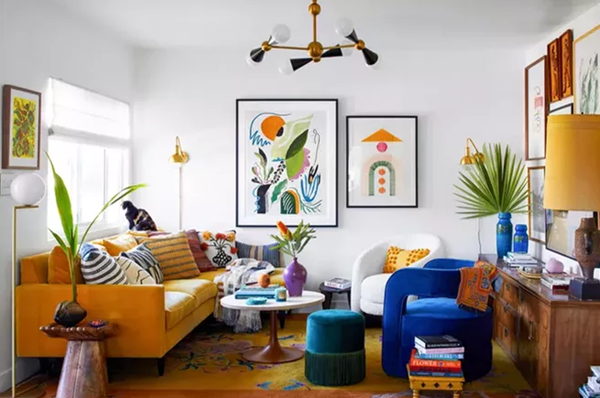
Color plays a pivotal role in setting the tone and atmosphere of a home, making it a key consideration for designers during their visit. The color scheme and palette of a space can evoke emotions, reflect personal style, and tie together the overall design aesthetic. Designers carefully evaluate the existing color scheme and suggest updates to create a harmonious and visually appealing environment.
“Color scheme and palette are key components of interior design, as they set the tone and atmosphere of a space. When I visit a home, I consider the impact of colors on mood and perception, and suggest harmonious color combinations.”
– Candice Olson, Interior Designer
Here are some key aspects of analyzing the color scheme and palette:
- Existing Color Palette: Designers assess the current color palette of the space, including walls, furniture, decor, and accessories. They evaluate how well the colors complement each other and whether any adjustments are needed to achieve balance.
- Impact of Color: Designers consider the psychological effects of color on mood and perception. They may recommend calming hues for bedrooms and social areas, vibrant shades for creative spaces, and neutral tones for a timeless backdrop.
- Color Trends: Keeping abreast of current color trends, designers suggest updated color palettes that resonate with contemporary tastes while reflecting the homeowner’s personality. They may introduce accent colors or trendy hues through accessories and decor.
- Color Psychology: Designers leverage color psychology to create desired atmospheres within different areas of the home. They may use warm tones to promote intimacy and coziness in living spaces, or cool tones to evoke serenity and relaxation in bedrooms and bathrooms.
- Personalization: Designers encourage homeowners to incorporate personal preferences and cultural influences into their color choices. They may suggest incorporating meaningful colors or motifs that reflect the homeowner’s heritage or interests.
By addressing these aspects of color scheme and palette, homeowners can create spaces that are visually cohesive, emotionally resonant, and reflective of their unique personality and lifestyle.
Real-life Example:
Consider a home with outdated wall colors that clash with the furniture and decor. By repainting the walls in a neutral hue and introducing pops of color through accent pillows and artwork, designers can transform the space into a cohesive and inviting environment that reflects the homeowner’s style. Through thoughtful consideration of color scheme and palette, homeowners can infuse their spaces with personality and warmth.
Also: 10 Affordable Home Decor Finds Under $50 to Elevate Your Space
Arrangement of Furniture

The arrangement of furniture is a crucial aspect of interior design that greatly influences the functionality and visual appeal of a space. When designers visit a home, they carefully evaluate how furniture is arranged and its impact on the overall layout and flow. From optimizing traffic flow to creating conversation areas, designers consider various factors to ensure a balanced and harmonious arrangement.
Here are some key considerations for arranging furniture:
- Functionality: Designers assess how well the furniture arrangement serves the functional needs of the occupants. They ensure that seating arrangements facilitate conversation, traffic flow is unobstructed, and key pieces of furniture are positioned for optimal usability.
- Space Planning: Designers take into account the dimensions and proportions of the room when planning furniture placement. They may recommend space-saving furniture solutions for smaller rooms or suggest creating distinct zones within larger spaces.
- Balance and Symmetry: Designers strive for balance and symmetry in furniture arrangement to create visual harmony. They may use focal points such as a fireplace or a piece of artwork as anchors for arranging furniture around.
- Traffic Flow: Designers pay close attention to traffic flow patterns within the space and ensure that furniture placement allows for easy movement. They may recommend removing excess furniture or reconfiguring layouts to improve circulation.
- Aesthetic Appeal: Designers consider the aesthetic impact of furniture arrangement on the overall design scheme. They may suggest arranging furniture to highlight architectural features or create focal points within the space.
By addressing these aspects of furniture arrangement, homeowners can create inviting and functional spaces that are visually appealing and conducive to their lifestyle.
Real-life Example:
Imagine a living room with a cluttered furniture arrangement that obstructs the flow of traffic and detracts from the overall aesthetic. By repositioning the furniture to create a more open layout with defined conversation areas, designers can transform the space into a welcoming environment that promotes social interaction and relaxation. Through thoughtful consideration of furniture arrangement, homeowners can optimize their living spaces for comfort and style.
Also: Best Paint Wall Colors That Increases Your Listing’s Value
Incorporating Texture and Materials

Texture and materials play a significant role in adding depth, visual interest, and tactile appeal to a home’s interior design. When designers visit a home, they pay close attention to the selection and use of textures and materials throughout the space. From soft fabrics to natural materials, designers consider how different textures and materials contribute to the overall ambiance and aesthetic.
Here are key aspects to consider when incorporating texture and materials:
- Variety of Textures: Designers assess the variety of textures present in a space, including smooth surfaces, rough textures, and tactile fabrics. They may recommend incorporating a mix of textures to add dimension and visual interest.
- Natural Materials: Designers emphasize the use of natural materials such as wood, stone, and metal to bring warmth and authenticity to a space. They may suggest incorporating natural elements through furniture, flooring, and decor.
- Soft Furnishings: Designers consider the selection of soft furnishings such as rugs, throws, and pillows to add softness and comfort to a space. They may recommend layering different textures to create a cozy and inviting atmosphere.
- Contrast and Balance: Designers pay attention to the balance of textures and materials within a space, ensuring that there is a harmonious blend of contrasting elements. They may recommend balancing rough textures with smooth surfaces or mixing matte finishes with glossy accents.
- Visual Impact: Designers consider the visual impact of textures and materials on the overall design scheme. They may suggest incorporating statement pieces or textured accent walls to create focal points and add personality to a space.
By carefully selecting and incorporating textures and materials, homeowners can enhance the sensory experience and create a visually dynamic environment that reflects their personal style.
Real-life Example:
Picture a bedroom with a monochromatic color scheme that lacks texture and visual interest. By introducing a variety of textures such as a plush rug, linen bedding, and a woven wall hanging, designers can transform the space into a cozy retreat with layers of tactile appeal. Through thoughtful consideration of texture and materials, homeowners can elevate their spaces with richness and character.
Attention to Accessories and Decor

Accessories and decor are the finishing touches that bring personality and character to a home’s interior design. When designers visit a home, they carefully assess the selection and arrangement of accessories and decor to enhance the overall aesthetic and ambiance. From artwork to decorative accents, designers consider how these elements contribute to the visual appeal and cohesion of the space.
Here are key aspects to consider when paying attention to accessories and decor:
- Artwork and Wall Decor: Designers evaluate the selection and placement of artwork and wall decor to create focal points and add visual interest. They may recommend artwork that complements the overall color scheme and style of the space.
- Decorative Accents: Designers consider the use of decorative accents such as vases, sculptures, and candles to add personality and flair to a space. They may suggest incorporating accessories that reflect the homeowner’s interests and hobbies.
- Textiles and Soft Furnishings: Designers pay attention to the selection of textiles and soft furnishings such as throw pillows, curtains, and rugs to add warmth and texture to a space. They may recommend layering different textures and patterns to create visual depth.
- Personalization: Designers encourage homeowners to personalize their space with meaningful accessories and decor that reflect their personality and lifestyle. They may suggest incorporating family photos, heirlooms, and cherished mementos into the design scheme.
- Editing and Curating: Designers advise on editing and curating accessories and decor to avoid clutter and maintain visual cohesion. They may recommend rotating seasonal decor or simplifying the arrangement of accessories for a cleaner and more streamlined look.
By carefully selecting and arranging accessories and decor, homeowners can infuse their spaces with personality and style, creating a welcoming and visually appealing environment.
Real-life Example:
Imagine a living room with mismatched accessories and cluttered decor that detracts from the overall design aesthetic. By editing and curating the selection of accessories, designers can create a cohesive and stylish look that enhances the ambiance of the space. Through thoughtful consideration of accessories and decor, homeowners can transform their spaces into personalized and inviting retreats.
Also: 10 Pro Tips for Decorating a Bedroom
Optimizing Organization and Storage

Organization and storage solutions are essential for maintaining a clutter-free and functional home. When designers visit a home, they assess the existing organization systems and storage solutions to optimize space and enhance usability. From maximizing closet space to incorporating multifunctional furniture, designers consider various strategies to improve organization and storage.
Here are key aspects to consider when optimizing organization and storage:
- Closet Systems: Designers evaluate the efficiency of closet systems and recommend organizing solutions such as shelving, drawers, and hanging rods to maximize storage space. They may suggest customizing closet configurations to accommodate specific storage needs.
- Multifunctional Furniture: Designers consider the use of multifunctional furniture such as storage ottomans, beds with built-in drawers, and modular shelving units to maximize space in smaller rooms. They may recommend furniture pieces that serve multiple purposes to optimize functionality.
- Hidden Storage: Designers explore opportunities for hidden storage solutions such as under-bed storage, built-in cabinetry, and concealed storage compartments to minimize visual clutter and maximize usable space.
- Kitchen Organization: Designers assess the organization of kitchen cabinets and pantry spaces to optimize storage for cookware, utensils, and food items. They may recommend storage solutions such as pull-out shelves, drawer dividers, and vertical storage racks to improve accessibility and organization.
- Entryway Organization: Designers consider the organization of entryway spaces to accommodate storage for shoes, coats, and accessories. They may suggest incorporating storage benches, coat racks, and wall-mounted organizers to keep entryways tidy and functional.
By implementing effective organization and storage solutions, homeowners can create a more organized and efficient living environment that enhances daily life and reduces stress.
Real-life Example:
Consider a home with limited closet space and cluttered living areas. By implementing custom closet systems, multifunctional furniture, and hidden storage solutions, designers can transform the home into a well-organized and functional space that meets the needs of the occupants. Through thoughtful consideration of organization and storage, homeowners can maximize space and improve usability in their homes.
Also: Designer’s Tips to Decorate Your Rental Without Making Permanent Changes
Infusing Personalization and Character

Infusing personalization and character into a home’s interior design is crucial for creating a space that truly reflects the identity and preferences of the occupants. When designers visit a home, they carefully assess the level of personalization and consider how to incorporate unique elements that tell the story of the homeowners. From personalized artwork to custom furniture, designers aim to create a space that feels distinctly individual.
“Personalization is essential in creating a home that truly reflects the personality and lifestyle of its occupants. I encourage homeowners to infuse their spaces with personal touches and meaningful elements that tell their unique story.”
– Joanna Gaines, Interior Designer and TV Personality
Here are key aspects to consider when infusing personalization and character:
- Personal Art and Decor: Designers evaluate the incorporation of personal artwork, family photos, and cherished decor items that hold sentimental value. They may suggest creating gallery walls or display areas to showcase these personal touches.
- Custom Furniture and Accessories: Designers consider the use of custom-designed furniture and accessories to add a unique and personalized touch to the space. They may recommend collaborating with local artisans or craftsmen to create bespoke pieces.
- Color and Pattern Preferences: Designers explore the color and pattern preferences of the homeowners, suggesting ways to incorporate these elements into the design scheme. They may recommend custom upholstery or accent pieces that align with the desired color palette.
- Cultural Influences: Designers pay attention to cultural influences that hold significance for the homeowners, incorporating elements that celebrate heritage and traditions. They may suggest integrating cultural artifacts, textiles, or artwork into the design.
- Hobbies and Interests: Designers encourage homeowners to showcase their hobbies and interests through design elements. Whether it’s a dedicated reading nook, a music corner, or a display of collectibles, infusing hobbies into the design adds a layer of personalization.
By infusing personalization and character into the design, homeowners can create a space that feels uniquely theirs, fostering a sense of belonging and comfort.
Real-life Example:
Imagine a home with a blank canvas that lacks personal touches. By incorporating artwork created by family members, custom-made furniture reflecting the homeowners’ taste, and elements showcasing their cultural heritage, designers can transform the space into a personalized haven. Through thoughtful consideration of personalization and character, homeowners can create a home that resonates with their identity and brings joy to daily living.
Also: The Ultimate Guide to Designing the Perfect Vignette for Your Home
Ensuring Maintenance and Upkeep

Ensuring maintenance and upkeep is essential for preserving the integrity and longevity of a home’s interior design. When designers visit a home, they not only focus on creating aesthetically pleasing spaces but also consider the practical aspects of maintenance and durability. From selecting durable materials to recommending cleaning and maintenance routines, designers aim to create designs that stand the test of time.
Here are key aspects to consider when ensuring maintenance and upkeep:
- Durable Materials: Designers prioritize the selection of durable materials such as hardwood flooring, stain-resistant fabrics, and easy-to-clean surfaces that can withstand daily wear and tear. They may recommend materials with high durability ratings to ensure longevity.
- Easy Maintenance: Designers consider the ease of maintenance when selecting materials and finishes for surfaces such as countertops, flooring, and furniture. They may suggest low-maintenance options that require minimal upkeep and cleaning.
- Cleaning Routines: Designers provide recommendations for cleaning routines and maintenance schedules to keep the space looking its best. They may suggest using gentle cleaning products and techniques that are suitable for specific materials.
- Preventive Measures: Designers advise on preventive measures to avoid damage and prolong the lifespan of design elements. They may recommend using coasters to prevent water stains on furniture, area rugs to protect flooring, and furniture pads to prevent scratches.
- Regular Inspections: Designers encourage homeowners to conduct regular inspections of their interior design elements to identify any signs of wear and tear or maintenance issues. They may suggest addressing minor repairs promptly to prevent further damage.
By ensuring maintenance and upkeep, homeowners can prolong the lifespan of their interior design elements and preserve the beauty and functionality of their spaces for years to come.
Real-life Example:
Consider a home with hardwood flooring that is not properly maintained, leading to scratches and dullness over time. By implementing a regular cleaning and maintenance routine using recommended products and techniques, homeowners can restore the flooring’s luster and prevent further damage. Through thoughtful consideration of maintenance and upkeep, homeowners can protect their investment and enjoy a beautiful and functional home for years to come.
Also: Top Best Countertop Surfaces to Elevate Your Kitchen
Most Popular Post:
10 Surprising Benefits of Printable Wall Art
How to Choose The Right TV Size to Decorate Your Living Room
The ultimate Smart Home Design Guide: Automate your life
Tips for Home Decorating on a Budget: Where to Splurge and Save
10 Best Couch Colors That Make a Room Look Bigger
Conclusion: Enhancing Your Home with Designer Insights
There you have it, you just discovered the 10 things designers notice when visiting a home, from the layout and lighting to personalization and maintenance. By understanding what designers focus on, homeowners can make informed decisions to enhance their living spaces. Whether it’s optimizing furniture arrangement for better flow or infusing personal touches for added character, implementing these insights can transform a house into a personalized and functional home. With careful consideration of these aspects, homeowners can create spaces that not only reflect their unique style and personality but also meet their practical needs for years to come.
Things Designers Notice When Visiting a Home (FAQs)
What do interior designers look for when visiting a home?
Interior designers pay attention to various aspects when visiting a home, including the overall layout and flow, lighting, color scheme, furniture arrangement, texture and materials, accessories and decor, organization and storage, personalization, and maintenance and upkeep.
How can I improve the flow of my home’s layout?
Improving the flow of your home’s layout involves reevaluating the arrangement of furniture, creating clear pathways for movement, and optimizing the use of space to enhance functionality and accessibility.
What are some tips for selecting the right lighting for my home?
When selecting lighting for your home, consider the purpose of each space, the amount of natural light available, and the desired ambiance. Incorporate a mix of ambient, task, and accent lighting to create layers of light and enhance the overall atmosphere.
How can I add personality to my home’s interior design?
Adding personality to your home’s interior design involves infusing personal touches such as artwork, decor items, and furnishings that reflect your interests, hobbies, and cultural influences. Incorporating unique elements that tell your story can create a space that feels distinctly yours.
What are some effective organization and storage solutions for maximizing space in a small home?
Effective organization and storage solutions for small homes include utilizing multifunctional furniture, incorporating hidden storage options, maximizing vertical space with shelves and cabinets, and implementing space-saving hacks such as under-bed storage and wall-mounted organizers.
How can I ensure the durability and longevity of my home’s interior design elements?
Ensuring the durability and longevity of your home’s interior design elements involves selecting high-quality materials, establishing regular cleaning and maintenance routines, addressing minor repairs promptly, and investing in preventive measures such as furniture pads and protective coatings.
What role does personalization play in interior design?
Personalization is essential in creating a home that reflects the personality and lifestyle of its occupants. It involves incorporating personal touches, meaningful decor items, and custom elements that resonate with the homeowner’s individuality and preferences.
How often should I update my home’s interior design?
The frequency of updating your home’s interior design depends on personal preferences, lifestyle changes, and evolving design trends. While some homeowners prefer to refresh their interiors periodically, others may opt for timeless designs that stand the test of time.
What should I consider when selecting furniture for my home?
When selecting furniture for your home, consider factors such as comfort, functionality, size, scale, and style. Choose pieces that complement the overall design aesthetic, provide adequate seating and storage solutions, and suit your lifestyle and needs.
How can I collaborate effectively with an interior designer?
Collaborating effectively with an interior designer involves communicating your vision, preferences, and budget clearly, being open to creative suggestions and solutions, and actively participating in the design process. Establishing clear goals and expectations from the outset can help ensure a successful partnership.
The length of curtains can significantly impact the overall aesthetic and functionality of a space, adding visual interest while also serving practical purposes. During home visits, interior designers pay close attention to the length of curtains or draperies, assessing their proportions in relation to window size and room height.
They evaluate whether curtains extend to the floor for a dramatic and polished look or if they are tailored to hover just above the window sill for a more casual vibe. Additionally, they pay close attention to the fabric weight and opacity of curtains, ensuring they strike the perfect balance between filtering natural light and providing privacy. By meticulously selecting the appropriate curtain length, designers can enhance the visual coherence and ambiance of the space while addressing the homeowner’s practical needs.
CATCH THE LATEST IN HOME DECOR TRENDS:
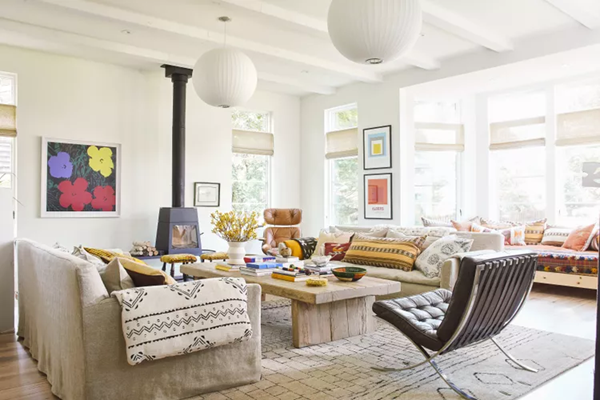
Steal These 15 Expert-Approved Decorating Secrets

How To Accessories Your Living Room
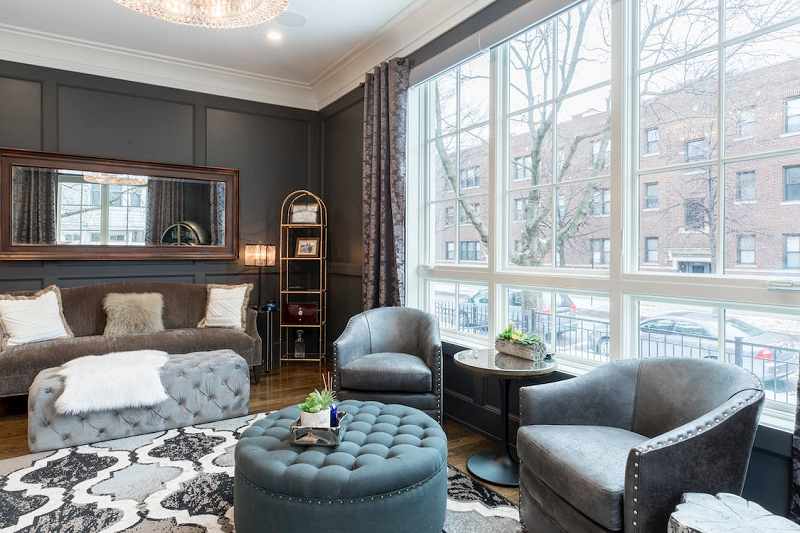
Small Space? 10 Ways To Make A Room Appear Bigger
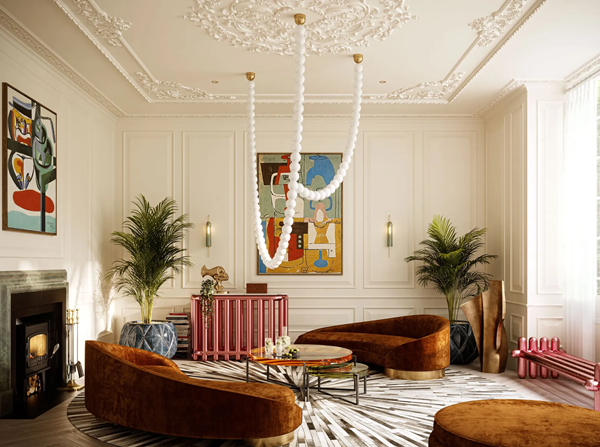
Make Your space Look Expensive
GET CAUGHT UP ON ALL THE INSPIRING DECOR TIPS:
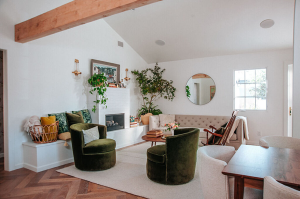
18 Fresh Decorating Ideas To Update Your Fireplace

How To Create An Art Gallery Wall
